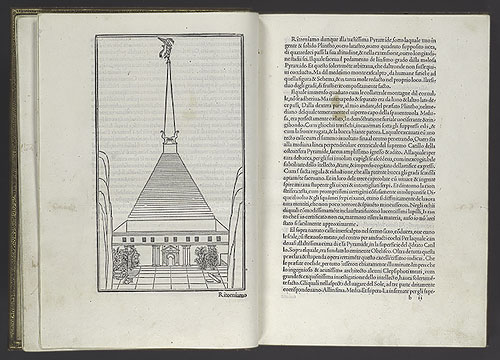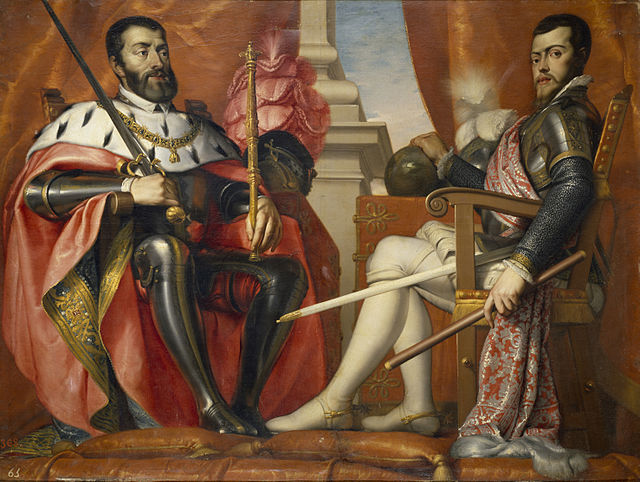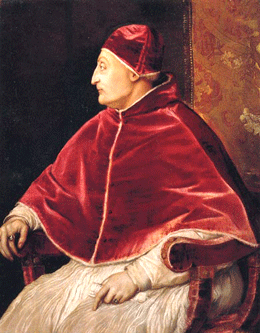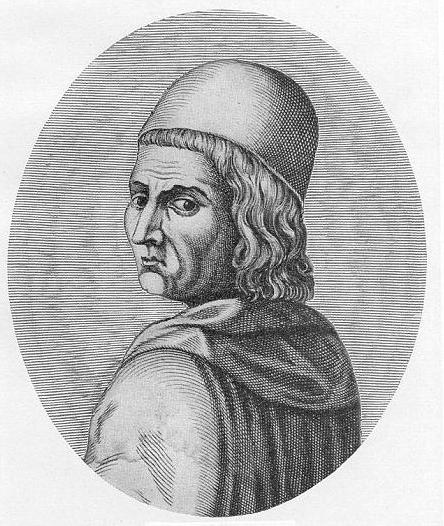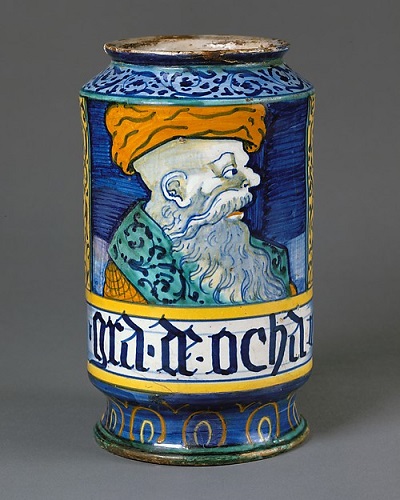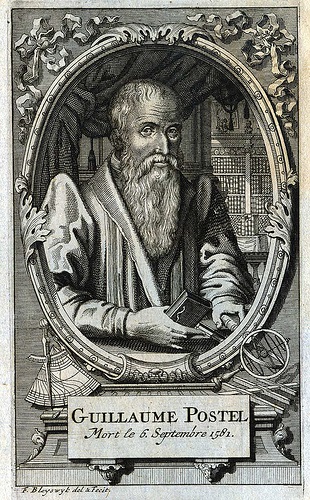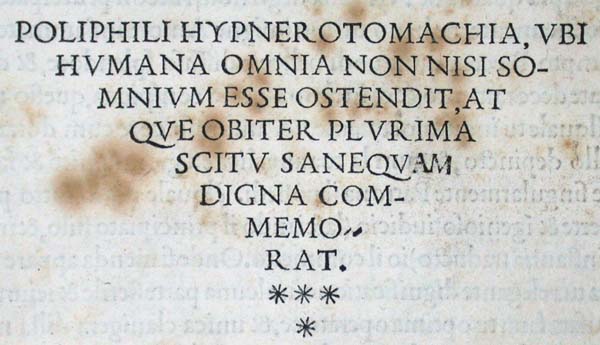
Printed by Aldus Manutius in Venice in 1499, Hypnerotomachia Poliphili [Poliphilo’s Dream of the Strife of Love] is perhaps the most complex roman-a-clef ever published. Illustrated with around 170 exquisite woodcuts, it is also considered one of the finest examples of early printing.
The book, written in a mixture of Italian, Latin, Greek, Hebrew, Arabic, Spanish, Venetian and a few other dialects, was long considered anonymous. Recent research however, chiefly led by Emanuela Kretzulesco , has pointed to Francesco Colonna, as the decorative first letters of each of the thirty-eight chapters spell out the following phrase: Poliam Frater Franciscus Columna peramavit [“Brother Francesco Colonna dearly loved Polia”]. A nephew of Cardinal Prospero Colonna, Francesco Colonna was part of the circle of Enlightenment figures that included Cardinel Bessarion, the future Pope Pius II and Nicholas V, known as the Renaissance Pope, opposed to the succeeding popes and in particular to Alexander VI Borgia. At a time when the Borgias, against the advice of Pius II and Nicholas V, were seeking to grant the pontiff temporal as well as spiritual power, and the papacy was embarking on a dark period of its history.

Poliphilo’s Dream was consequently rendered deliberately obscure in order to escape papal censure. More than a story of Poliphile’s love for Lucrezia, the book is a spiritual quest of a philosopher passionately devoted to divine wisdom [Athena Polias]. Developing humanist themes, he transmitted in a cryptic way the spiritual testament of a circle of theologians united around Nicholas V, who had undertaken comparative studies of religious traditions going back to ancient Egypt and Greece with great openness of mind, thus reviving the heritage of Pope Sylvester II [Gerbert of Aurillac]. In concurrence with the Florentine Platonic Academy of the Medici and Marsilio Fincino, this group notably included the architect Leon Battista Alberti and Prospero Colonna, as well as being a great inspiration to Pico della Mirandola, Leonardo da Vinci, Nicolaus Copernicus, Giordano Bruno and Galileo.
Poliphilo’s Dream reveals that the best way to know God is through Nature, divine creation. With the helps of the codes held in the Hyeroglyphica of Horus Apollo, it also illustrates the spiritual road that leads there. In an absolutely extraordinary fashion for anyone interested in understanding the background against which this volume evoled, it is clear that is also closely inspired the gardens of Versailles or Boboli in Florence, as well as Bernini’s celebrated elephant-obelisk in Rome through the numerous symbols scattered along Poliphilo’s route.
